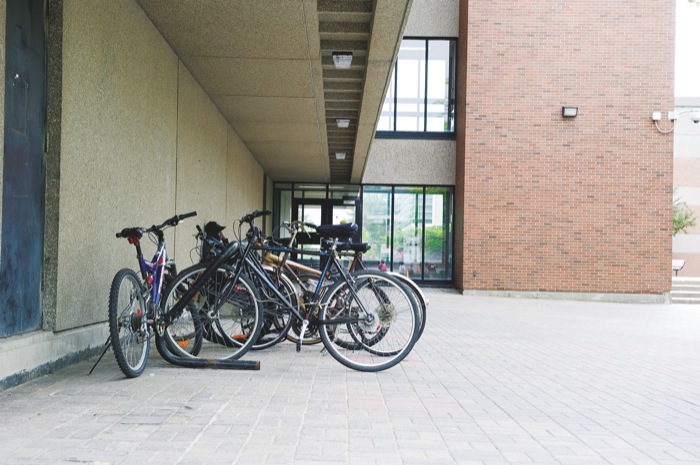Jacqueline Perlin
Assistant News Editor
York’s new master plan, set to be unveiled closer to the end of this year, is giving cyclists some special consideration, with a newly planned network of bike lanes.
Wallace Pidgeon of York media said the implementation of bike routes on campus is an attempt by the university to reduce emissions and gridlock around campus.
“This is really a part of the subway coming. It makes it easier for students who will subway to [campus] then bike around,” he says, noting that the subway initiative remains on schedule.

Christopher Wong, who is coordinating the master plan under the York University Development Corporation (YUDC), says there will be no elimination of roadways or parking in favour of bikes, but that the plan will simply be an adaptation to the existing roadways.
“There could be new segments of roads or the addition of new bike routes,” says Wong, who believes the new plan is a natural response to the growing number of individuals using bikes on campus.
While Pidgeon clarified that the exact plans have not yet been finalized, he expects the bike paths will integrate with the city’s network of bike paths.
“You have the hydro corridor bike lane that goes from the south end of campus to Dufferin Street,” Pidgeon says. “The bike paths would make it easier for students to get from a city path directly to a campus path.”

He also mentioned that while bike share and rental programs have not yet been discussed, he feels they are a possibility.
The addition of bike lanes at Canadian campuses has not been without controversy. Pierre Barbarie of university safety and security services for McGill University, explained to the McGill Daily last September that the university had begun asking students to dismount from their bikes while on campus.
“We have issues with the [cyclists] in terms of not respecting the rules,” Barbarie said.
Tom Fabian of Students’ Society McGill told the McGill Daily in the same article that the university was facing issues with cyclists.
“There’s a lot of bikes that come in that are not McGill students because it’s a very convenient [path] way,” he said. “[So] we just have a huge amount of bikes coming through and that’s just taking away from students walking around, which can be annoying.”
Wong maintains that while the purpose of York’s master plan is to reduce the number of single occupancy vehicles coming to campus, the plan gives equal consideration towards cyclists, pedestrians and drivers alike.
Though York faces harsh climates that are not always favourable to cycling, Wong believes there are students who will do so nonetheless.
“If you really break it down and if someone is a strong advocate of cycling, they will [bike] even in the worst weather,” he says. “[The weather] is not a reason to stop pursuing greater bike paths on campus.”
While no definitive date has been set for the bike-friendly changes, Wong’s planners will always be open to better bike services.
Does York need bike paths, or will increasing the number of cyclists on campus lead to problems? Do you bike on campus?


